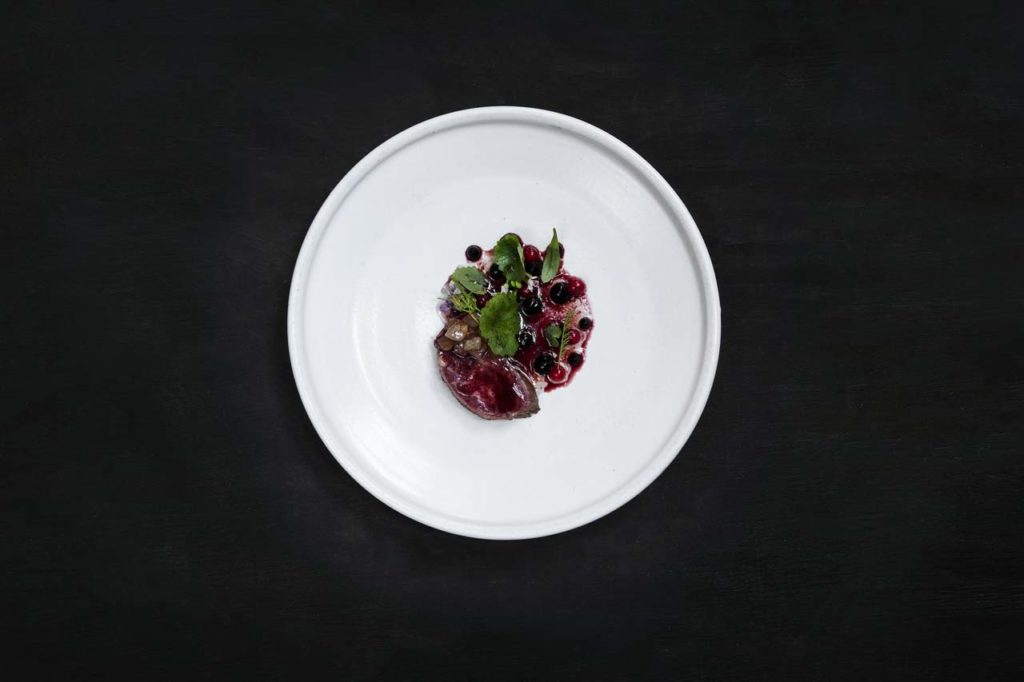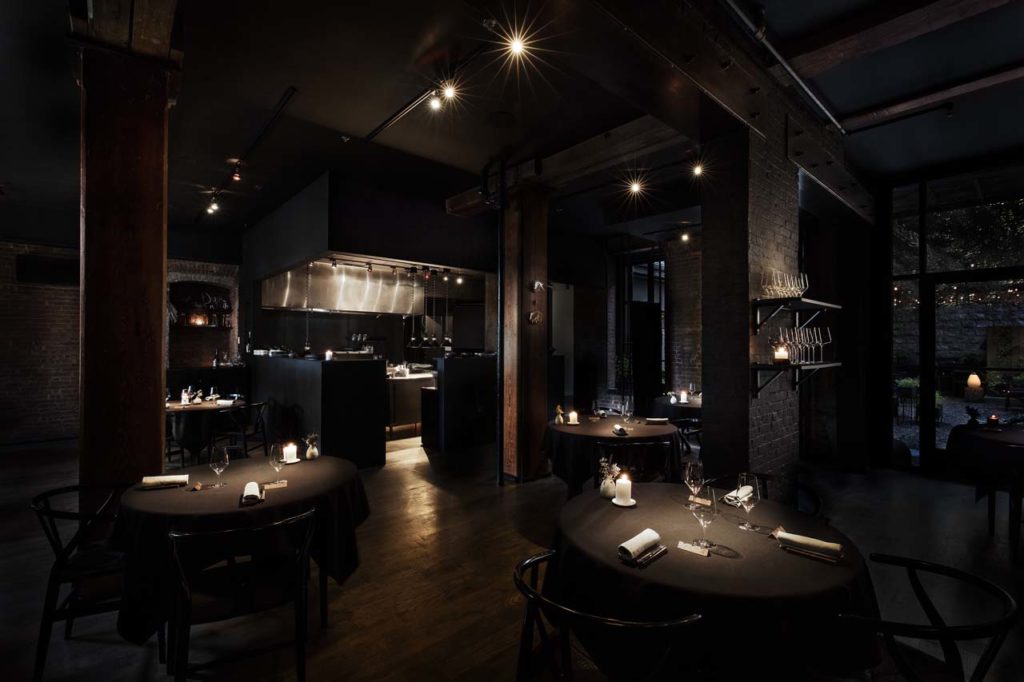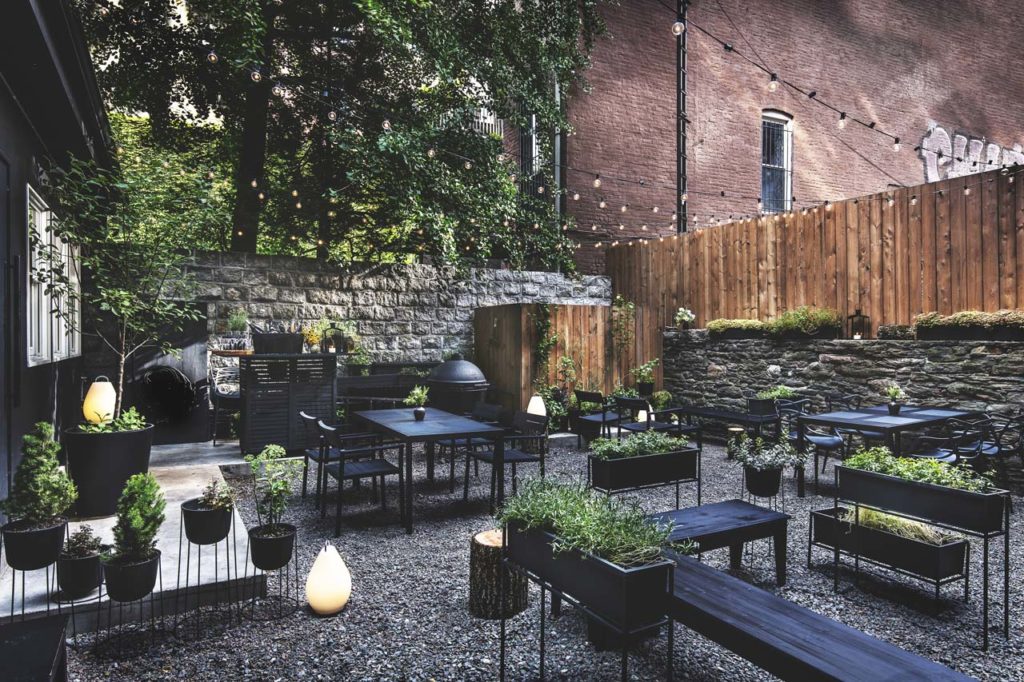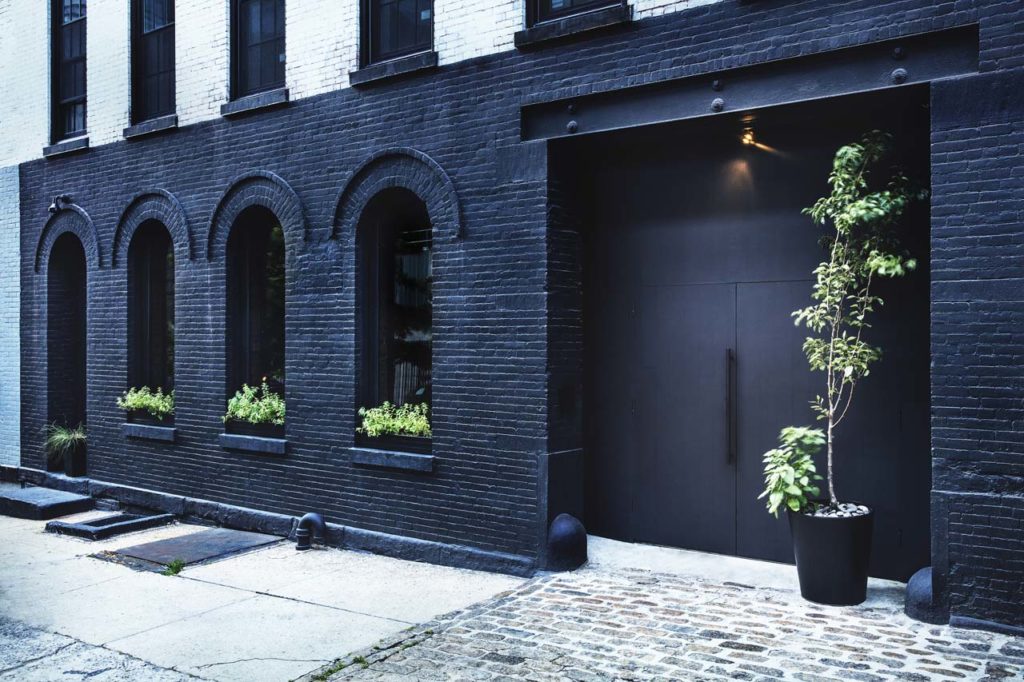Aska, a must-experience on any serious NYC food agenda, calmly refutes everything we know about running a successful restaurant
by Christine Siracusa • photos by Charlie Bennet

What is Aska doing differently?
Short answer: everything.
The spacious dining room—its décor urban-rustic-chic (if that’s a thing)—features just ten tables, and there is only one wave of customers per night. Industry standard, of course, is more in line with squeezing as many tables into a space as possible, then turning them quickly…quickly.
The generous negative space on the floor—again in contravention of typical cheek-by-jowl seating arrangements—is mirrored on the tables. Aska’s food, always artfully arranged, covers at most half the plate.

The menu might also come as a bit of a surprise. Diners choose between a 10-course or 19-course tasting menu, $175.00 and $250.00 per person, respectively (service included.) The fare, which reflects Chef Fredrik Berselius’ Nordic upbringing, is informed by ingredients available in New York State, and is often described as “fancy.” So, dining at Aska requires some forethought. Reservations are required, and are often made well in advance, so there’ll be ample time for palate planning.
When making a reservation, diners are encouraged to set aside the evening to make the most of the experience. A journey here isn’t something you do on your way to doing something else, as dinner in the City so often is. Asking a New Yorker to set aside an entire evening to do just one thing is a big ask, but people are flocking…and the press is almost evangelical in its response. Aska was decorated with two Michelin Stars right out of the gate, and recently made Bon Appétit’s list of “50 Best New Restaurants in the Country.” Could it be we’re actually hungry for a food adventure fueled less by adrenaline and more by thoughtful exploration?

On any given night, the person who prepares a dish is also likely to be the one who serves it, often Chef Berselius himself. In a world where kitchen heads typically design a new restaurant and then hire a staff to run it, Berselius values direct connection between the pass line and the clientele. Hospitality runs deep here, and the team seems as enthused preparing the food as the guests are receiving it.
Dishes and aesthetics are in large part a product of nature. Ingredients include raw fruit, twigs, hay, juniper, pine, lichen, barely cooked seafood, and pig’s blood. One wonders if, perhaps, the kitchen harbors a secret portal to a magical land just beyond its walls—a place where elves cavort in a forest foraging the juiciest of mushrooms and picking off wild game with a bow and arrow, and a roiling sea churns up net after net of plump shellfish and roe.

The truth is only slightly less magical but, unfortunately, elf free. The restaurant is just two minutes away from North Brooklyn Farms, which grows herbs and flowers, and Aska team members visit at least once a day. They also enjoy harmonious relationships with farms in the Catskills that supply fresh and sustainably-raised meat.
Farm-to-table ingredients are essential to Berselius’s brand of cuisine. He serves dishes like a langoustine (also known as Norway lobster) wrapped in a singed bouquet of herbs and served with langoustine-head sauce; cured lamb’s heart, charred beneath burning straw until it turns to ash then sprinkled over pickled sun chokes; and chanterelle mushroom broth and cooked cream covered in lichens.
This kind of cuisine is more than novelty and artful arrangement; it distills the flavors down to their essence, and has some associations with molecular gastronomy. If that essence isn’t of the highest quality, the food will be lacking, so proximity to suppliers is essential.

Chef Berselius and Williamsburg go way back. It’s one of the first places he lived when he came to New York, and his response to the creative energy pulsing through its streets was immediate and intense. There was a prior incarnation of Aska in a shared space at Kinfolk studios which was outgrown fairly quickly. When looking to expand, his intention was to remain in Williamsburg, but as his search dragged on, he gradually opened his mind to other neighborhoods. Then he discovered a Civil War-era warehouse down by the water on South 5th Street and was drawn in by its old bones, large courtyard and cellar, and high ceilings.

“I saw so much potential in the space to transform it into what it is today,” said Berselius. “It had never been used as a restaurant before and was left sitting empty for a while until I came across it, so it was very much a blank slate when we started.”
Near the water and nestled underneath the Williamsburg Bridge, the restaurant is set apart from the hustle of the neighborhood, and hanging a chef ’s hat here required a leap of faith that foot traffic wouldn’t be essential to meeting the bottom line. The Swedish-born experimenter won that bet. In addition to suiting current needs perfectly, Berselius also sees a space that supports future ambitions.
The menu varies based on seasonality and available ingredients, but Chef doesn’t see a reason to pivot merely for the sake of change. (“Our caviar and onion dish has been on the menu since we opened,” he said, “and I think it will remain.”) Aska also is gaining a clientele of familiar faces (which is also remarkable given the price point), and Berselius estimates three quarters of customers are local, residing in or very near to the City. The other quarter travel from other parts of the country as well as internationally.
Just a year after re-opening, Aska is firmly planted in NYC’s fine dining landscape. If you are a serious eater, chances are good you’ll eventually find yourself at one of its ten tables.

Aska
47 S 5th Street / 929.337.6792 / askanyc.com


